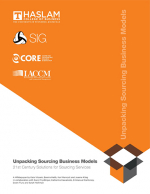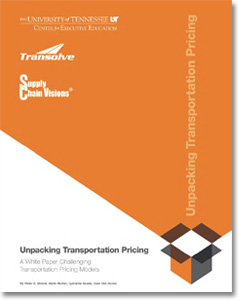Challenging Transportation Pricing Models
The cost to transport finished goods from the plant through the warehouse facilities and, finally, to the customer continues to be the largest single logistics expense for most companies.
In its simplest form, transportation is getting your shipment from Point A to Point B within a certain amount of time, using a set amount of space.
The cost to transport finished goods from the plant through the warehouse facilities and, finally, to the customer continues to be the largest single logistics expense for most companies, averaging 63% of the company’s total logistics cost.
Transportation commerce is the business of buying and selling transportation services.
Unfortunately, most companies still rely on the outmoded National Motor Freight Classification (NMFC) schema established in 1936. This method allocates the cost of using the space and/or weight resources the carrier is supplying to the shipper.
The National Motor Freight Classification has outlived its key use (borrowed from the railroad’s Uniform Freight Classification (UFC) of creating a “simplified” table of classes to which a rate can be assigned).
This clone is the basis for pricing transportation commerce for shipments from 150 lbs to less than 20,000 lbs., which are classified as Less-Than-Truckload (LTL).
It is the authors’ opinion that this approach for pricing and structuring LTL transportation commerce is based on a dogma that is an accepted industry practice, but is actually archaic for today’s businesses.
However, the outmoded pricing schema is only one part of the problem. Industry experts suggest that the industry is likely on the verge of shifting pricing power from the shipper to carriers among all modes of transportation.
The recession has forced a considerable rationalization of enterprises, assets and cost structure, which leaves fewer, but considerably stronger major LTL carriers in the marketplace. Currently, 85.5% of the total LTL market is controlled by the top 25 LTL carriers, with 98.5% controlled by the top 50 LTL carriers.
Typically, the shipper community, including third-party logistics providers (3PLs) and other Logistics Service Providers (LSPs), is ill prepared to cope with this shift in the economic strength and pricing power of its LTL carriers.
What’s Related




Favorites





